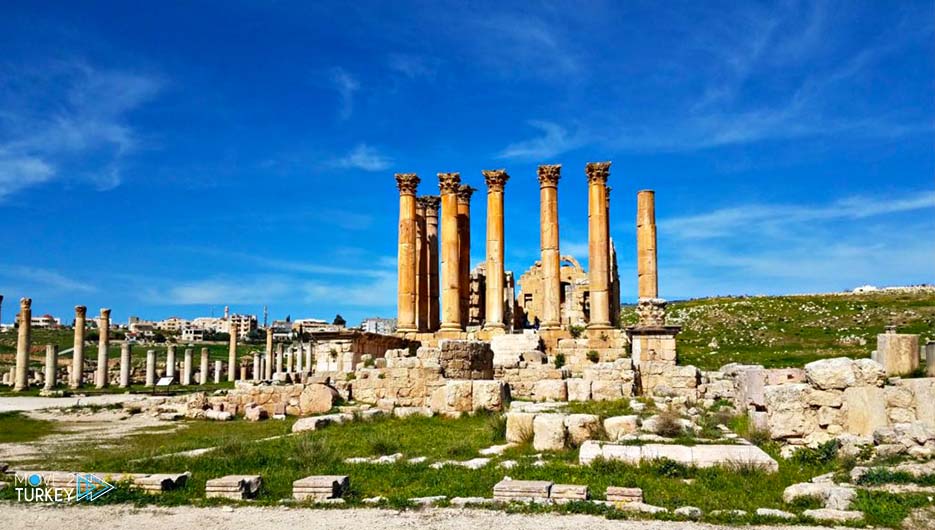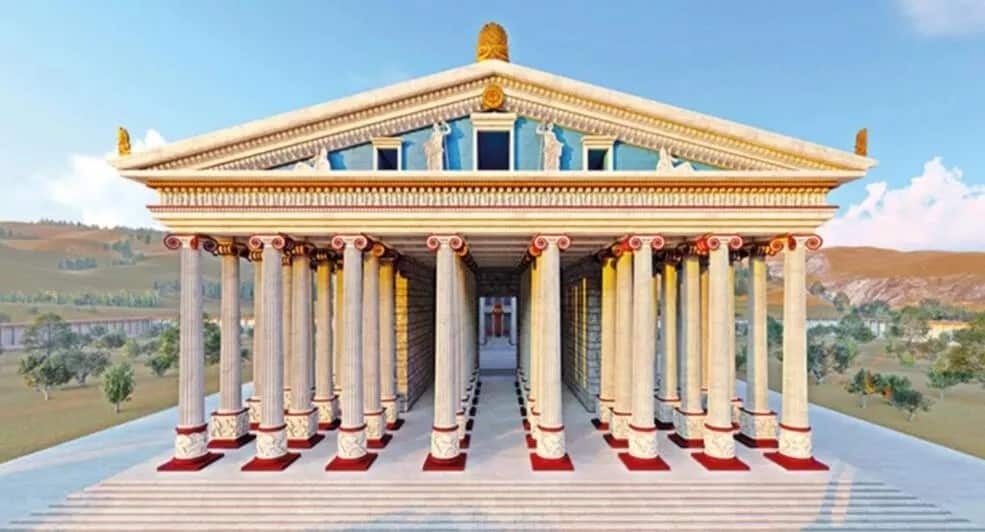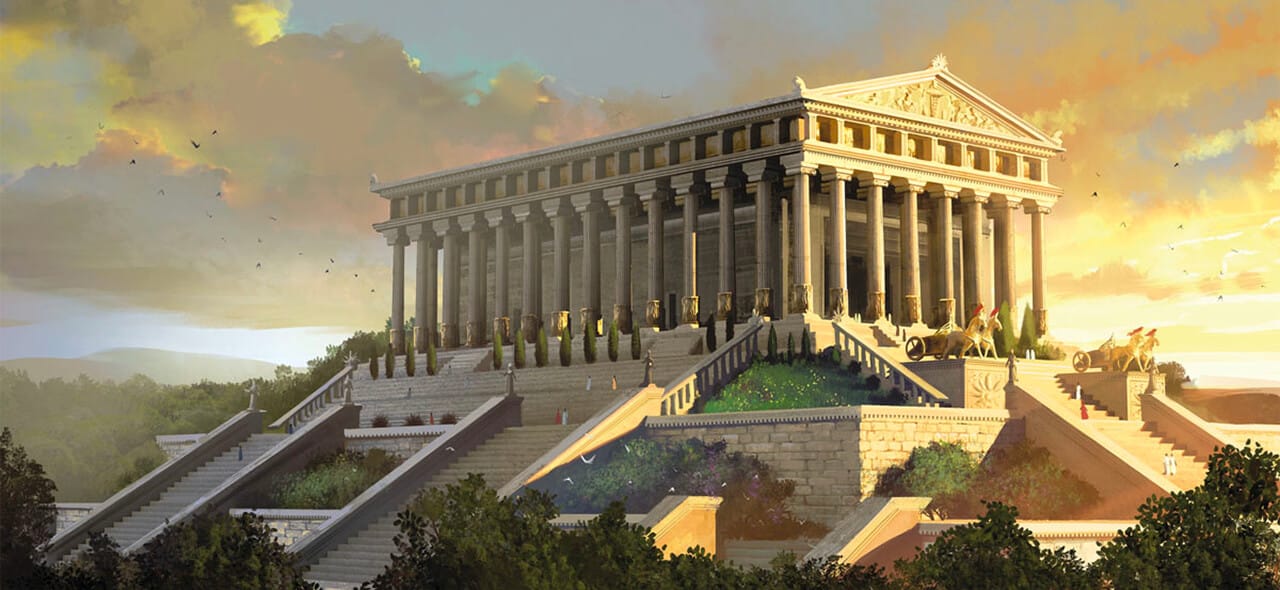The Temple of Artemis at Ephesus: One of the Seven Wonders of the Ancient World

I. Introduction to the Temple of Artemis
The Temple of Artemis at Ephesus is one of the ancient world's most famous and iconic structures. It was one of the Seven Wonders of the Ancient World, a list compiled by ancient Greeks showcasing the most remarkable architectural and artistic achievements of their time. The temple was dedicated to Artemis, the Greek goddess of hunting, the moon, and fertility. It was located in the ancient city of Ephesus, now modern-day Turkey. The temple was known for its grandeur and size, attracting visitors and pilgrims from all over the Mediterranean.
Overview of the Seven Wonders of the Ancient World
The Seven Wonders of the Ancient World were remarkable structures considered marvels of human ingenuity and creativity. They were:
-
The Great Pyramid of Giza: The only remaining wonder, the Great Pyramid of Giza in Egypt, is a colossal structure built as a tomb for the pharaoh Khufu. It is the largest of the three pyramids in the Giza Necropolis.
-
The Hanging Gardens of Babylon: These legendary gardens were said to have been built by King Nebuchadnezzar II for his wife in the city of Babylon, located in present-day Iraq. The gardens were a breathtaking display of flora and fauna.
-
The Statue of Zeus at Olympia: Located in the Temple of Olympia, Greece, this massive statue depicts the god Zeus sitting on a throne. It was considered a masterpiece of ancient Greek sculpture.
-
The Temple of Artemis at Ephesus: As mentioned earlier, this temple was dedicated to the goddess Artemis and was a monumental structure in the ancient city of Ephesus.
-
The Mausoleum at Halicarnassus: This grand tomb was built for Mausolus, the ruler of Caria in present-day Turkey. It was an architectural marvel and served as the inspiration for the term "mausoleum".
-
The Colossus of Rhodes: This colossal statue of the sun god Helios stood at the entrance of the harbour of Rhodes, an island in present-day Greece. It was one of the tallest statues of the ancient world.
-
The Lighthouse of Alexandria: Located in Alexandria, Egypt, this lighthouse was built to guide ships into the harbour. It was one of the tallest man-made structures of its time.
Importance and significance of the Temple of Artemis
The Temple of Artemis at Ephesus was a magnificent architectural achievement and a sacred site with great religious and cultural significance. It was considered the largest temple of its time and was known for its exceptional beauty and splendour. The temple was adorned with intricate sculptures, precious metals, and treasured artefacts. It was a place of worship and pilgrimage, drawing devotees of Artemis from all corners of the ancient world.
The Temple of Artemis was a religious centre and a hub of commerce and trade. Ephesus flourished around the temple, gaining wealth and prosperity from the pilgrims who visited. The temple's stature and reputation brought fame to Ephesus and made it a significant cultural and economic hub in the ancient Mediterranean region.
Today, all that remains of the Temple of Artemis are a few ruins and scattered fragments. However, its legacy remains one of the most celebrated monuments of antiquity. The temple's significance is evident in its inclusion in the list of the Seven Wonders of the Ancient World, a testament to its impact on ancient civilizations and its enduring influence on art, architecture, and culture.

II. History and Construction of the Temple
Background information about Ephesus and Artemis
The Temple of Artemis at Ephesus was one of the Seven Wonders of the Ancient World and a significant religious and cultural site in ancient Greece. Ephesus, located in present-day Turkey, was an important city in the region and a centre of worship for the goddess Artemis, often associated with fertility and nature. The city thrived from the 10th century BC until it was destroyed by the Goths in 263 AD.
The original temple dedicated to Artemis was a simple structure built around the 7th century BC. Still, it was later rebuilt on a grand scale to become one of the most magnificent temples in the ancient world.
Architectural Features and design of the Temple
The construction of the new Temple of Artemis began around 550 BC and was overseen by the Greek architect Chersiphron and his son Metagenes. Several famous figures of the time visited and praised the temple, including the philosopher Heraclitus and the historian Pliny the Elder.
The temple was an excellent example of ancient Greek architecture. It featured a peripteral octastyle design, meaning it had eight columns on its front and back facades and 20 columns on its sides. The temple measured approximately 377 feet long and 180 feet wide, making it one of the largest temples of its time.
The temple's columns were marble and stood approximately 60 feet high. They were decorated with intricate carvings and reliefs depicting scenes from Greek mythology and stories related to Artemis. The temple's roof was made of timber covered with marble tiles, adding to its grandeur and elegance.
Inside the temple was a magnificent statue of Artemis made of gold and ivory, created by the renowned Greek sculptor Phidias. The statue stood approximately 40 feet tall and depicted the goddess with multiple breasts, symbolizing her role as a fertility deity.
The Temple of Artemis was surrounded by a sacred precinct, which housed various buildings and monuments related to the worship of the goddess. The precinct included an altar, a temple treasury, and a pinakotheke (art gallery). The temple's exterior was adorned with numerous statues and dedicatory inscriptions from pilgrims and admirers.
Despite its grandeur and importance, the Temple of Artemis suffered several setbacks. It was damaged by floods, rebuilt by Alexander the Great, and destroyed and rebuilt again by the Goths. Eventually, it fell into ruin and was stripped of its marble by subsequent civilizations.
Today, only a few scattered ruins remain at the site of the Temple of Artemis, reminding us of its once-glorious past. Its significance, however, lives on as one of the Seven Wonders of the Ancient World and is a testament to the ingenuity and architectural marvels of the ancient Greeks.

III. Destruction and Reconstruction of the Temple
Accounts of the multiple destructions and reconstructions
The Temple of Artemis at Ephesus, one of the Seven Wonders of the Ancient World, faced a tumultuous history of destruction and reconstruction. Here are some notable accounts of its destruction and reconstruction:
-
The First Destruction: The temple was destroyed in 356 BCE by a man named Herostratus, who sought fame through the act. He burned down the temple, which caused outrage among the Ephesians. The temple was eventually rebuilt on an even grander scale.
-
The Second Destruction: In 262 CE, the temple was destroyed by the invasion of the Goths. This devastating blow to Ephesus, and the temple remained in ruins for many years.
-
The Reconstruction: The temple was reconstructed once again during the Roman period under the orders of Emperor Vespasian. His successor, Emperor Titus, led the reconstruction, and the new temple was even more magnificent than before.
-
The Final Destruction: Sadly, the temple met its final destruction in the 5th century CE when it was burned down by a mob led by St. John Chrysostom. The site was eventually abandoned and fell into ruin.
Famous events and incidents related to the Temple
Throughout history, the Temple of Artemis witnessed various famous events and incidents that added to its allure and significance. Here are a few notable examples:
-
The Annual Festival: The temple was a focal point for the annual festival dedicated to Artemis, known as Artemisia. This festival attracted pilgrims and visitors from far and wide, contributing to the wealth and prestige of Ephesus.
-
The Statue by Praxiteles: The temple housed a legendary statue of Artemis, sculpted by the renowned artist Praxiteles. The statue was said to be so beautiful that it was considered an embodiment of divine beauty.
-
The Visit of Alexander the Great: Alexander the Great visited the temple during his conquest of Persia. Legend has it that he offered to finance the reconstruction of the temple. Still, the Ephesians declined, as they believed it would be inappropriate for a mortal to rebuild a temple dedicated to a goddess.
-
The Pilgrimages: The Temple of Artemis was a major pilgrimage site, attracting devotees from all over the Ancient Greek and Roman world. These pilgrimages added to the religious and cultural significance of the temple.
While the Temple of Artemis no longer stands today, its legacy lives on through historical accounts and archaeological excavations. It remains a symbol of the rich cultural heritage of the ancient world and continues to captivate the imagination of people around the globe.

IV. Significance and Influence of the Temple
Role of the Temple in Ancient Greek society and Religion
The Temple of Artemis at Ephesus played a significant role in ancient Greek society and religion. It was dedicated to the goddess Artemis, who was worshipped as the protector of the city of Ephesus and the goddess of hunting, wildlife, and fertility. The temple served as a place of worship and a centre for religious festivals and ceremonies.
-
Religious Pilgrimage: The temple attracted pilgrims from all over Greece and beyond, who would travel to Ephesus to pay their respects to Artemis. This brought economic prosperity and cultural exchange to the region.
-
Political and Economic Center: The temple also served as a political and economic centre. It housed valuable treasures and offerings from devotees, and it attracted merchants who would set up shops and trade around the temple grounds.
-
Cultural Identity: The temple symbolised Greek cultural identity and pride. Its grandeur and magnificence showcased the power and wealth of the ancient Greeks.
Cultural and artistic impact on the region
The Temple of Artemis at Ephesus had a profound cultural and artistic impact on the region and beyond. Its architecture and artistry were renowned and influenced subsequent generations of architects and artists.
-
Architectural Marvel: The temple's design and construction were remarkable achievements in ancient architecture. It was one of the largest buildings of its time, adorned with intricate sculptures and ornate decorations.
-
Influence on Greek Architecture: The temple's architectural style, characterized by its grand columns and elaborate sculptural reliefs, had a lasting impact on Greek architecture. This style can be seen in other ancient Greek temples, including the Parthenon in Athens.
-
Artistic Inspiration: The sculptural reliefs and statues in and around the temple inspired artists throughout the ancient world. The depictions of mythical figures and scenes from Greek mythology influenced the development of ancient Greek art.
-
Legacy and Cultural Contribution: The Temple of Artemis at Ephesus's legacy continues to be celebrated. Its status as one of the Seven Wonders of the Ancient World solidifies its place in history and serves as a testament to the artistic and cultural achievements of the ancient Greeks.
To learn more about the Temple of Artemis at Ephesus, visit its Wikipedia page for further information.
V. Description of the Temple
The Temple of Artemis at Ephesus was one of the most magnificent structures of the ancient world. Located near the modern town of Selcuk in Turkey, it was dedicated to the Greek goddess Artemis, the goddess of hunting, fertility, and the protector of young girls. The temple was designed and constructed in the 6th century BC, but unfortunately, only a few fragments and ruins remain today.
Detailed description of the structure and layout
The Temple of Artemis was an enormous and grand structure recognized for its size and beauty. Here is a detailed description of its structure and layout:
1. Size: The temple was an impressive 425 feet long and 225 feet wide, making it one of the largest temples in the ancient world.
2. Columns: The temple was supported by 127 Ionic columns that stood approximately 60 feet tall. These columns were intricately carved and adorned with ornate decorations.
3. Construction Materials: The temple was constructed primarily using marble, a hallmark of grandeur during that time. The marble came from nearby quarries, adding to the temple's overall elegance.
4. Multiple Levels: The temple consisted of multiple levels, creating a sense of grandeur and scale. The lower level housed the main cult statue of Artemis, while the upper levels were adorned with magnificent artwork and sculptures.
5. Courtyard: The temple had a large courtyard, the Temenos, surrounded by a colonnade. This space provided an area for the faithful to gather and worship.
Ornate decorations and sculptures found within the Temple
The Temple of Artemis was not only known for its size but also for its elaborate decorations and sculptures. Many of these intricate artworks have been lost, but historical accounts describe the temple's opulence and beauty. Some notable features included:
1. Ornate Friezes: The temple's friezes depicted various mythological scenes and stories, showcasing the exceptional craftsmanship of ancient Greek artists.
2. Sculptures of the Amazons: Artemis was often associated with the Amazons, a legendary race of warrior women. The temple featured sculptures of these fierce and powerful female warriors, honouring Artemis' connection to them.
3. Depiction of Animals: Artemis was the goddess of hunting, and her temple showcased her connection to the animal kingdom. The temple contained sculptures and carvings of animals, such as lions, deer, and birds.
The Temple of Artemis at Ephesus was an architectural marvel and a testament to the ancient world's skill and creativity. Although it no longer stands in its original glory, its significance and historical importance place it among the Seven Wonders of the Ancient World.
To learn more about the Temple of Artemis, you can visit its dedicated page on Wikipedia.
